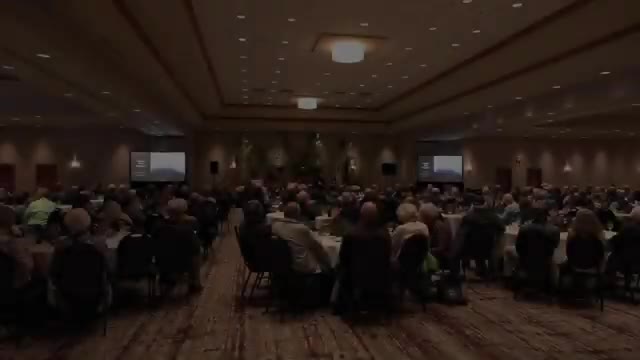Panel in Missoula marks 120 years of the U.S. Forest Service, credits workforce and partnerships for resilience
October 15, 2025 | Missoula, Missoula County, Montana
This article was created by AI summarizing key points discussed. AI makes mistakes, so for full details and context, please refer to the video of the full meeting. Please report any errors so we can fix them. Report an error »

Panelists at a Missoula event on Oct. 21 reflected on roughly 120 years of the U.S. Forest Service, saying the agency’s endurance has depended on its workforce, partnerships and an ability to adapt to changing public demands and laws.
Panelists—Donna Sinclair, James Killen and Rachel Klein—told an audience that the Forest Service’s mission and methods have shifted repeatedly since the early 1900s but that continuity of purpose among field employees and local partners sustained the agency through wars, economic crises, big fires and political shifts.
Tom (moderator) opened the session by summarizing the agency’s long arc from the early conservation movement through the modern era and asked the panel where the agency’s strength comes from. Sinclair described a decades-long process of workforce diversification and institutional change; Killen framed present-day risks to the administrative state and traced recurring political challenges to federal land management; Klein offered family- and community-level examples of how the conservation mission has been carried on the ground.
The panel reviewed milestones including early professional forestry, the establishment of recreation and wilderness programs, the New Deal conservation corps, post‑World War II development and the environmental statutes of the 1960s and 1970s that changed how federal lands are managed. Panelists emphasized that no single law or leader explains the agency’s longevity; rather, they said, it is the day‑to‑day work of rangers, scientists and local partners.
Donna Sinclair, a historian who researches workforce change, noted that the agency’s identity shifted as environmental and civil‑rights laws opened public‑land work to new specialists and broader participation. James Killen, a scholar of public‑land politics, warned that contemporary political movements challenging federal authority pose a different kind of test than prior policy disputes, and he said resilience now depends on employees continuing to deliver locally important services. Rachel Klein, a former Forest Service historian, described how families and local station life reinforced the agency’s conservation culture and urged preservation of records and archives that document that history.
Panelists answered audience questions about the future era of forest management, public engagement and the loss of institutional knowledge. Several speakers reported that certain diversity and workforce data and some web archives had been removed or were less accessible than in prior years; Klein and Sinclair encouraged routing physical collections to repositories such as the Forest History Society and the museum that collects Forest Service holdings.
The event combined historical overview with practical concerns about staff retention, archives and outreach; panelists closed by urging continued attention to the people who carry out the Forest Service mission on the ground.
Panelists—Donna Sinclair, James Killen and Rachel Klein—told an audience that the Forest Service’s mission and methods have shifted repeatedly since the early 1900s but that continuity of purpose among field employees and local partners sustained the agency through wars, economic crises, big fires and political shifts.
Tom (moderator) opened the session by summarizing the agency’s long arc from the early conservation movement through the modern era and asked the panel where the agency’s strength comes from. Sinclair described a decades-long process of workforce diversification and institutional change; Killen framed present-day risks to the administrative state and traced recurring political challenges to federal land management; Klein offered family- and community-level examples of how the conservation mission has been carried on the ground.
The panel reviewed milestones including early professional forestry, the establishment of recreation and wilderness programs, the New Deal conservation corps, post‑World War II development and the environmental statutes of the 1960s and 1970s that changed how federal lands are managed. Panelists emphasized that no single law or leader explains the agency’s longevity; rather, they said, it is the day‑to‑day work of rangers, scientists and local partners.
Donna Sinclair, a historian who researches workforce change, noted that the agency’s identity shifted as environmental and civil‑rights laws opened public‑land work to new specialists and broader participation. James Killen, a scholar of public‑land politics, warned that contemporary political movements challenging federal authority pose a different kind of test than prior policy disputes, and he said resilience now depends on employees continuing to deliver locally important services. Rachel Klein, a former Forest Service historian, described how families and local station life reinforced the agency’s conservation culture and urged preservation of records and archives that document that history.
Panelists answered audience questions about the future era of forest management, public engagement and the loss of institutional knowledge. Several speakers reported that certain diversity and workforce data and some web archives had been removed or were less accessible than in prior years; Klein and Sinclair encouraged routing physical collections to repositories such as the Forest History Society and the museum that collects Forest Service holdings.
The event combined historical overview with practical concerns about staff retention, archives and outreach; panelists closed by urging continued attention to the people who carry out the Forest Service mission on the ground.
View full meeting
This article is based on a recent meeting—watch the full video and explore the complete transcript for deeper insights into the discussion.
View full meeting
